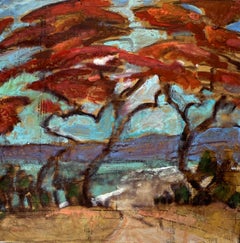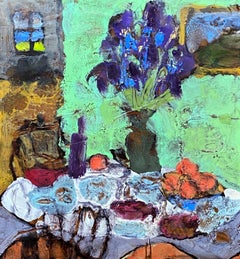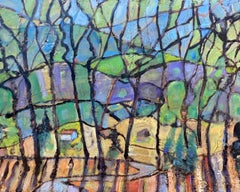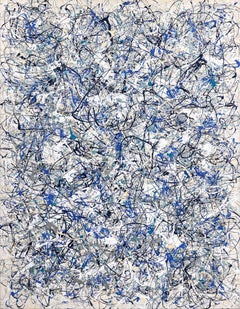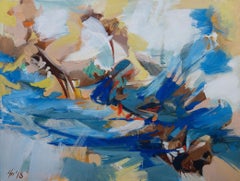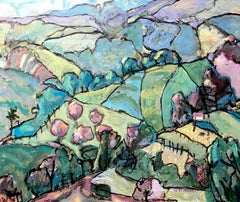Encaustic More Art
Artist Comments
Fiery trees tower over a path that opens up to a sparkling hidden beach. Artist James Hartman rendered this piece by first creating his own cradled panel. He ...
21st Century and Contemporary Abstract Expressionist Encaustic More Art
Encaustic
Artist Comments
A vibrant encaustic on wood painted with oil over a collage of antique ephemera. Artist James Hartman portrays a colorful stil...
21st Century and Contemporary Abstract Expressionist Encaustic More Art
Encaustic
Artist Comments
Artist James Hartman draws inspiration from the experience of seeing sunlit colors and details appearing through the strong vertical tree pattern. He expresses the painting sections to appear like stained glass. James highlights small areas where collaged 100-year-old paper show through the surface, he does this in a non-disruptive way. James applies heat to fuse the oils into a mixture of beeswax and damar crystals to seal the work.
About the Artist
When James Hartman was in art school, he became fascinated with the Society of Six, a group of artists who painted en plein air (outdoors) and exhibited together in the San Francisco Bay Area during the early 20th Century. James's paintings of the Northern California landscape pay tribute to some of the great Bay Area artists of the past. His expressive scenes feel alive through his vibrant use of color and his painterly brushwork. James’s paintings have an immediate visual impact from a distance, yet up close, dissolve into a series of confident marks and strokes. There is a simultaneous complexity and steadiness in his flattened, color-blocked planes. Knowledge and observation are essential elements of James’s working practice. To this end, he spends a large proportion of his time painting on location. His body of work captures the fresh and sunlit essence of the coastal California hills.
Words that describe this painting: expressionism, encaustic, beeswax, collage, antique ephemera...
21st Century and Contemporary Abstract Expressionist Encaustic More Art
Encaustic
2010s Abstract Expressionist Encaustic More Art
Canvas, Acrylic, Latex
2010s Abstract Expressionist Encaustic More Art
Canvas, Oil
2010s Abstract Expressionist Encaustic More Art
Canvas, Acrylic
1970s Abstract Expressionist Encaustic More Art
Canvas, Oil
1970s Abstract Expressionist Encaustic More Art
Canvas, Oil
1970s Abstract Expressionist Encaustic More Art
Canvas, Oil
2010s Abstract Expressionist Encaustic More Art
Acrylic, Wood Panel
2010s Abstract Expressionist Encaustic More Art
Oil
2010s Abstract Expressionist Encaustic More Art
Acrylic, Wood Panel
21st Century and Contemporary Abstract Expressionist Encaustic More Art
Canvas, Oil
2010s Abstract Expressionist Encaustic More Art
Oil
1980s Abstract Expressionist Encaustic More Art
Paper, Acrylic
Artist Comments
Artist James Hartman captured the rolling green landscape near his home in the San Francisco Bay Area. He stitched together farmland and grassy hillsides in a...
21st Century and Contemporary Abstract Impressionist Encaustic More Art
Encaustic
